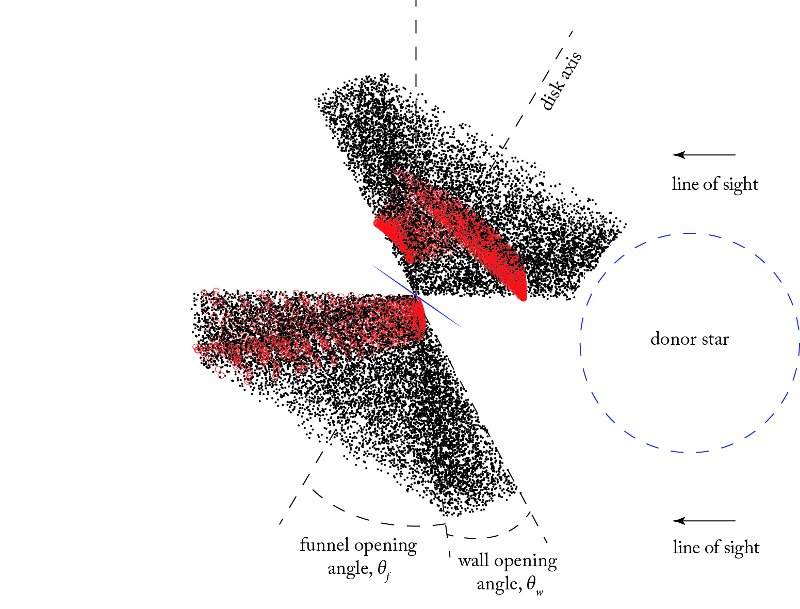
Fig.2.
The first computer model of the supercritical-disk wind.
There are two stars in the binary system:
a donor star on the right and a black hole on the left (an infinitely
small point in the center of a complex figure). The accretion disk
rotates around the black hole (shown by the blue bar); the disk axis
is indicated. In the very center of the disk around the black hole
the gas is ejected and flies away with a velocity of a few thousand
kilometers per second (the gas is shown by the black dots). The wind
is ejected as a hollow cone; it has a funnel (the funnel opening angle
in the figure) and thick walls (wall opening angle in the figure).
The observer looks at the whole system and the supercritical disk
from the right, and sees everything up to the wind photosphere
(the red color in the figure). If we move along the observer's line of
sight, we can see everything to the right of the photosphere and the
photosphere itself, but we can see nothing behind (to the left of)
the photosphere, neither the black hole nor the bright inner parts
of the funnel.

